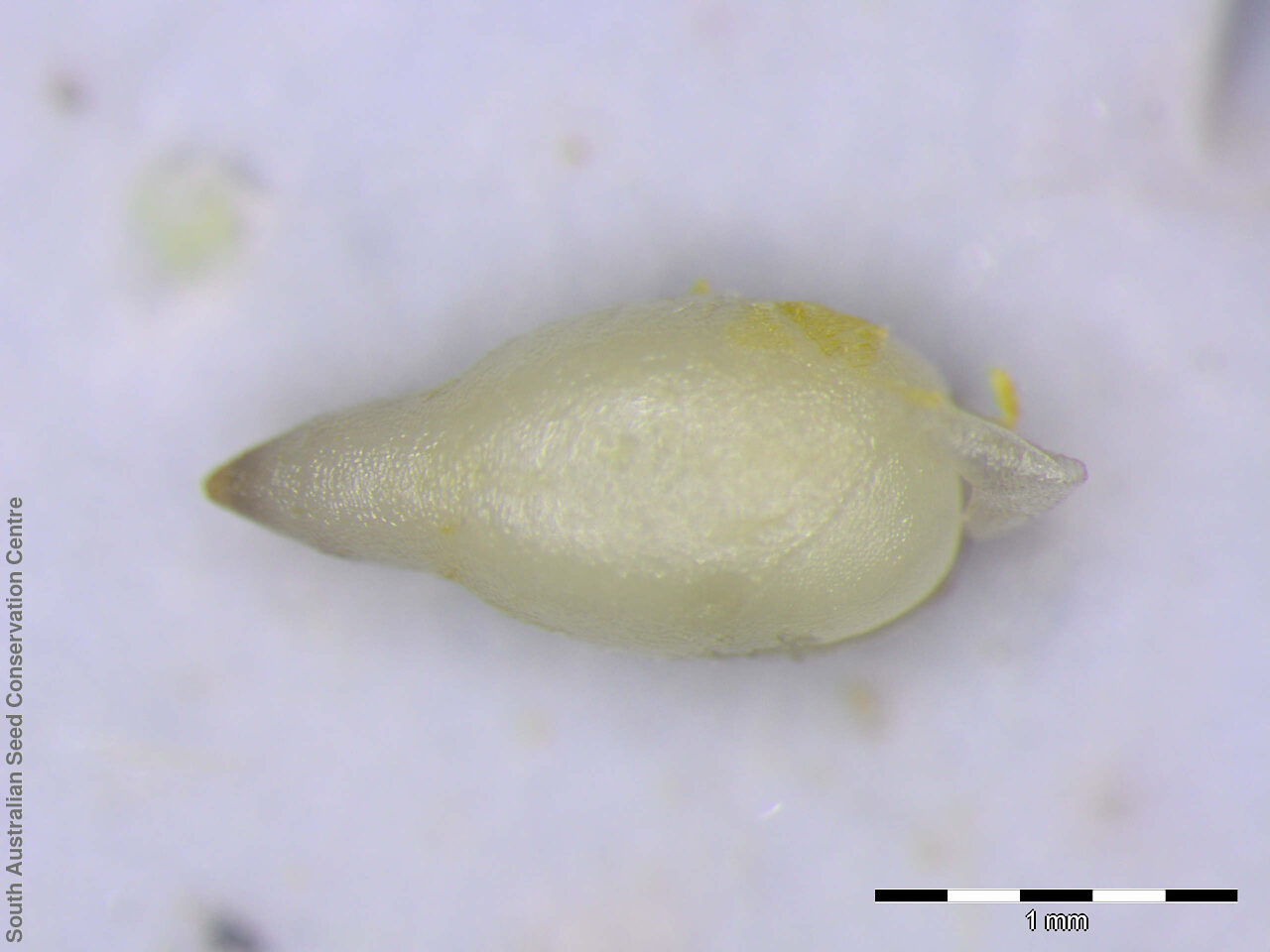









Botanical art
Prior names
Helipterum oppositifolium
Griffithia helipteroides
Common names
Twin-leaf Sunray
Twin-leaf Everlasting
Etymology
Rhodanthe from the Greek 'rhodon' meaning a rose and 'anthos' meaning a flower; referring to the rose-like flowers of Rhodanthe manglesii, the type for the genus. Oppositifolia from the Latin 'oppositus' meaning standing against or opposed and 'folium' meaning a leaf; referring to the leaves arranged opposite each other.
Distribution and status
Very few records and found on the north central Eyre Peninsula in South Australia, growing on sand over limestone, stony loam and clay in saline depressions, breakaways and stony ridges. Also found in Western Australia. Native. Very rare in South Australia. Common in Western Australia.
Herbarium region: Eyre Peninsula
AVH map: SA distribution map (external link)
Plant description
Erect twiggy, annual herb to 30 cm high with red stems covered in white waxy hairs, leaves opposite, green, margin red and covered in white waxy hairs. Flowers terminal, small, papery, yellow-cream. Flowering between July and September. Fruits are brown globular daisy head. Seeds are white, oblong seed to 3 mm long and 2 mm wide, covered in creamy hairs and long pappus. Seed embryo type is spatulate fully developed.
Seed collection and propagation
Collect seeds between September and November. Collect heads that are matured, those that are drying off, fat, turning a straw colour seeds and seeds come off easily if you pull it out with your fingers. Place the heads in a tray and leave to dry for a week. Then rub the heads gently by hand or with a rubber bung to dislodge the seeds. Use a sieve to separate the unwanted material. Store the seeds with a desiccant such as dried silica beads or dry rice, in an air tight container in a cool and dry place. From one collection, the seed viability was high, at 95%.
| Location | No. of seeds (weight grams) | Number of plants | Date collected | Collection number Collection location | Date stored | % Viability | Storage temperature |
|---|---|---|---|---|---|---|---|
| BGA MSB | 2,800 (3.1 g) 2,800 (3.1 g) | 50+ | 20-Sep-2009 | DJD1604 Eyre Peninsula | 1-Jun-2010 | 95% | +5°C, -18°C |
Number of plants: This is the number of plants from which the seeds were collected.
Collection location: The Herbarium of South Australia's region name.
% Viability: Percentage of filled healthy seeds determined by a cut test or x-ray.